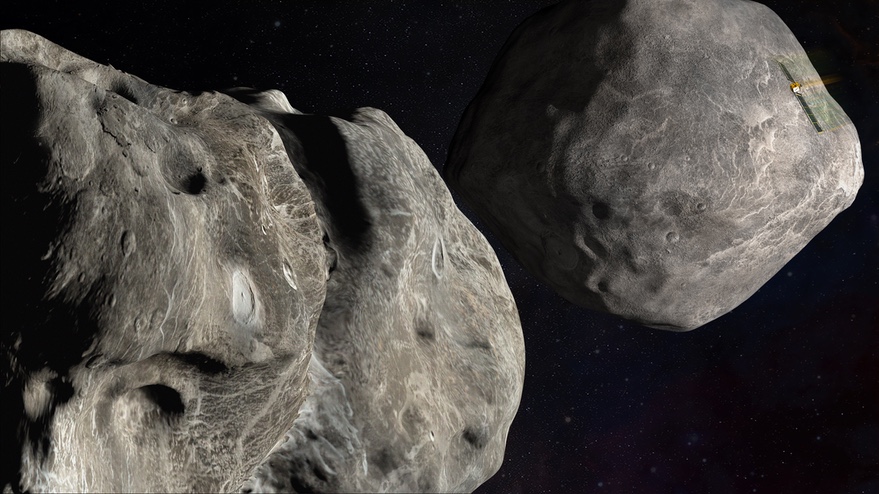Products You May Like
LAUREL, Md. — A NASA spacecraft collided with a moon orbiting a near Earth asteroid Sept. 26 in a demonstration of a technology that could one day be used to protect the Earth from a hazardous object.
NASA’s Double Asteroid Redirection Test (DART) spacecraft hit Dimorphos, an asteroid about 160 meters across orbiting the larger asteroid Didymos, at 7:14 p.m. Eastern. Confirmation of the impact, at a speed of 6.5 kilometers per second, came from a loss of signal from DART at mission control at the Johns Hopkins University Applied Physics Lab here.
The final approach of DART to Dimorphos appeared to go as planned, with no issues reported by controllers in the last hour. The spacecraft was able to autonomously lock onto Dimorphos and target the asteroid, 160 meters across, with a final reported miss distance of only 17 meters from the center of the asteroid.
DART launched last November as NASA’s first dedicated planetary defense mission. The purpose of DART is to test the “kinetic impactor” approach to changing the trajectory of asteroids if one was found to be on a collision course with the Earth.
The impact kicks off a campaign of observations to determine the change in the orbit of Dimorphos around Didymos. Nancy Chabot, coordination lead for DART at APL, said more than three dozen observatories around the world plan to observe the asteroids using optical and radar instruments to measure the change. “We want to maximize what we’re able to learn from this first planetary defense mission, so we’ve kept the international, worldwide observation campaign pretty open,” she said.
Cristina Thomas, observation working group lead for the mission at Northern Arizona University, said those observations will continue for about six months, until Didymos is no longer visible from Earth, to get an extremely precise measurement of the orbit change. An initial measurement of that change should be available in a couple weeks.
The size of the orbit change will tell how efficient the impact was in changing the orbit, which will be useful for planning for any future missions. Models of the impact show a wide range of potential outcomes based on the composition, structure and shape of Dimorphos.
“It’s really dependent on what Dimorphos is made of,” said Angela Stickle of APL, who led modeling efforts ahead of the DART impact. “It’s the reason we’re doing the test, because we don’t know a lot about the asteroid.”
While there are wide variations in the size and composition of asteroids, the data from the DART impact can help refine models. “It’s extremely helpful,” said Mallory DeCoster of APL, who also worked on modeling. “Your models need validation with experimental data, even if you have just one data point to extrapolate to.”
While it was popular to state that NASA was “smashing” an asteroid, Dimorphos is likely intact other than a crater a few tens of meters across. DART itself is destroyed, although Stickle said the impact speed was not high enough to vaporize the spacecraft. Some debris may be left behind on the surface, she said, although it’s not clear it would be recognizable.
When it comes to the collision between DART and Dimorphos, said Chabot, “the spacecraft is going to lose.”
